OUR BURNING PLANET OP-ED
Fire in Arcadia: Navigating life close to wild spaces and the megafires driven by the climate crisis
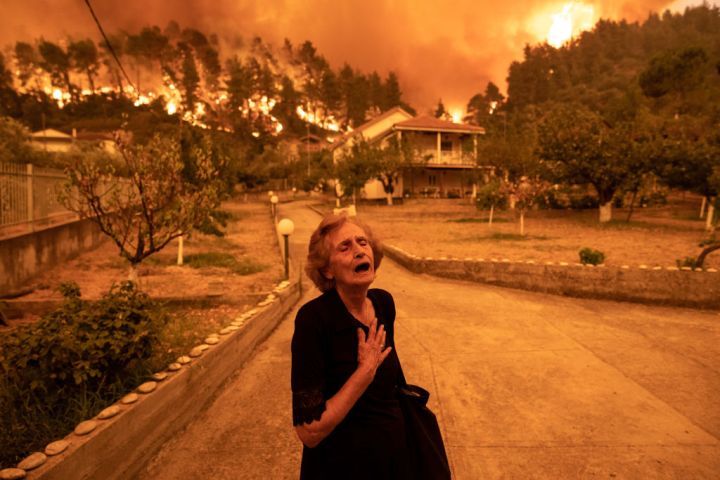
Urban-wildland interfaces are the most rapidly expanding type of human settlement in the world. As populations grow and land use changes, we push our civilisations deeper into these spaces that were once wild. This causes a greater risk of wildfires started by the increasing presence of humans on such fringes.
Christopher DZ Mason is a wildlife filmmaker and writer who has produced more than 20 natural history documentaries for international broadcast, including a series titled ‘Anatomy of a Wildfire’ for ITV Studios. He writes about environmental concerns.
The air is like the scalding gasp of an oven. Around me, trees and plants quiver as they cook; leaves pale and wilting. Overhead the sky grows hazy and the sun glows red. Anyone who has lived in a fire-prone place knows the colour; the way reality changes through that fearful tint.
At 40°C (or 104 Fahrenheit), life becomes almost too hot to bear. This is both my personal opinion and a biological fact. Most creatures on Earth can only flourish in the narrow band of temperatures between 0-40°C. Anything hotter is hostile territory. It has been like this at times in Greece over the past few weeks. Starting in late July, a prolonged and languishing heatwave smothered the country, with temperatures peaking at 46°C in places.
By early August Greece was burning, with hundreds of fires igniting seemingly at once. The news was full of flickering flames and flustered reporters, and in a report from a town close to us, I saw footage of a man shouting up at the heavens as his house burnt. This week, thankfully the rains came and most of the fires are out. But the thoughts they ignited in me are still raging.
We had come to Greece from South Africa — where for years we lived in a small coastal village outside Cape Town. On two occasions in those years, we had to evacuate our home because of wildfires and I had stood at the firelines, feeling the precarity of human endeavour in the face of flame and choking smoke. Here in Greece, we once more live on the edge of the wilderness fringe, in the bushy liminal zone scientists call the urban-wildland interface. This makes us part of a growing number of people who must learn to live with fire.
Urban-wildland interfaces are the most rapidly expanding type of human settlement in the world. As populations grow and land-use changes, we push our civilisations deeper into these spaces that were once wild. This causes a greater risk of wildfires started by humans increasingly present on such fringes. Although wildfires are considered “natural disasters”, only 10 to 15% are caused by lightning, although this number does go up in some parts of the world. Still, the data shows that the vast majority of wildfires are started by people, unintentionally or otherwise. Even though I knew this theoretically, I still wondered, “how exactly are all of these fires starting? Surely they can’t all be cigarette butts?”
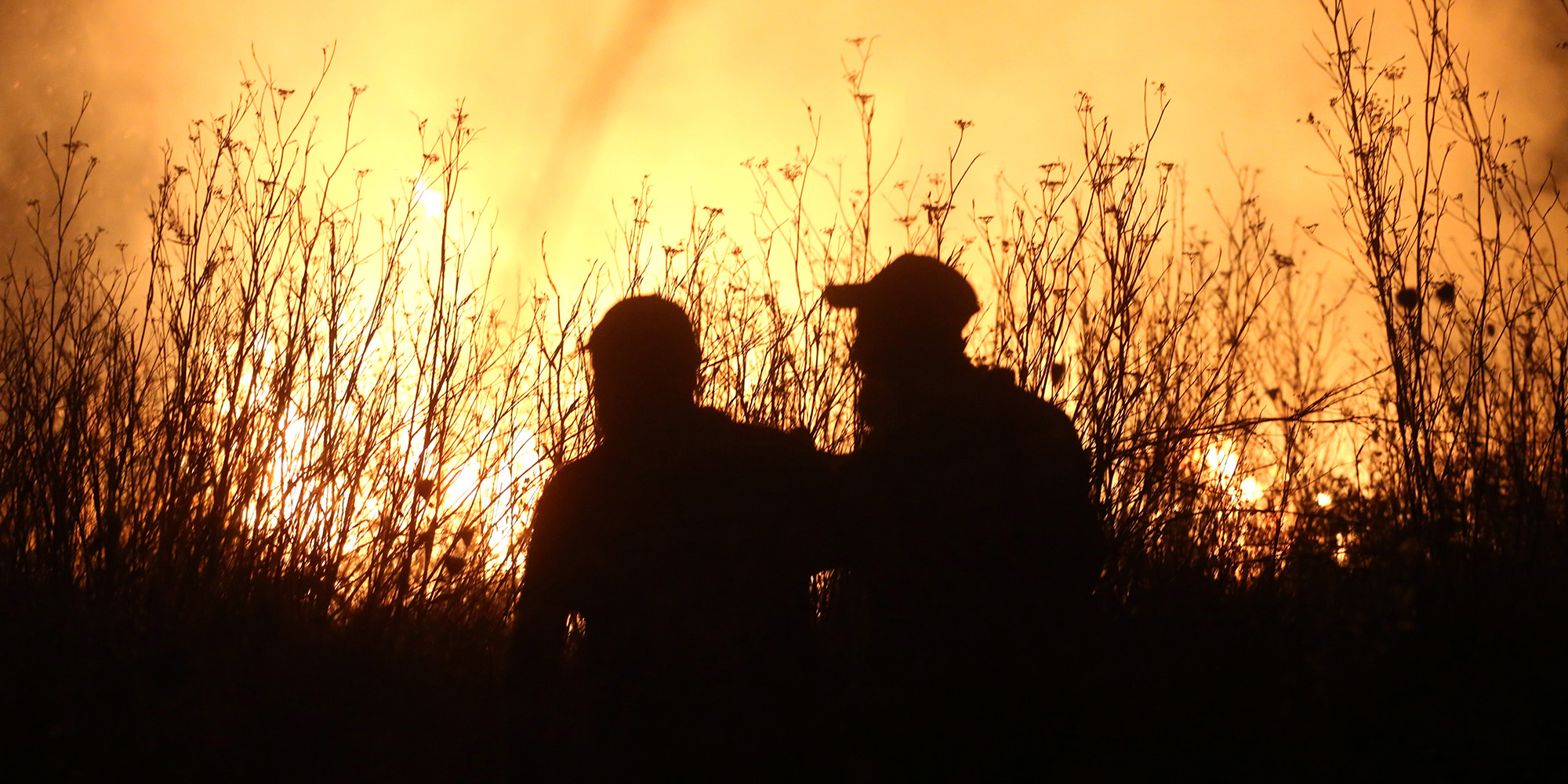
Two firemen try to contain a wildfire northeastern of Athens, Greece, 05 August 2021. (Photo: EPA-EFE/ALEXANDER BELTES)
I asked a local farmer, Mixali Ardamis, this question. He has a large farm nearby; a beautiful tapestry of fields and nut tree groves woven into the rolling forest that surrounds us here in the mountainous south of Arcadia. He told me that a big problem was old electrical power lines overheating in summer, dropping sparks down into whatever bushes or weeds may be underneath. He spoke to the need for regular maintenance of these lines, something he doesn’t think is happening. I had come to ask Mixali what we would do if a fire came over the mountains towards us. What I really wanted to know was what it means to live next to a forest; to exist with the ever-present possibility of wildfire as a way of life?
Mixali told me that he was part of the local fire volunteer group that equipped pickup trucks with water tanks and provided tractors for clearing bush. “We have gear and we can go into the fires. We’re not trained, but we have good experience.” I asked him what he does to mitigate the chances of fire on his own land. “Cutting fire breaks is important, because you need something to stop the fires when they come.”
This hit close to home for me because we have a thick belt of trees behind our house, with a few large pines less than 20 metres away. Up until now, I had seen no practical reason to remove these old trees that bring us both shade and beauty. But when ash began to fall from the sky, I looked up at them and shuddered. My personal quandaries represent on a micro-scale the complexities of forest management at large, and the question of how we navigate living close to the wild spaces we so need. One thing, however, is clear. As we continue to extend our lives and communities further into these wilderness areas, we become increasingly at risk of not just starting fires, but having our lives embroiled in their paths.
Wildfires are now a more pressing global issue than ever before. This summer in Europe has seen a catastrophic fire season. Wildfires are burning not just in Greece, but also in France, Portugal, Spain, Italy, Turkey, Russia and Siberia. In the US state of California, the Dixie Fire alone has scorched more than 600,000 acres. Much of California, like southern Europe, has a Mediterranean climate, where long, dry summers create high fire risks. These conditions are exacerbated by the effects of climate change, such as rising temperatures and more severe droughts.
At the tip of southern Africa, while all this is happening, Cape Town is being soaked by the rainy season of a similarly Mediterranean climate. Cape Town, too, has urban-wildland interfaces that are vulnerable to conflagration. Many of these are inhabited by the poorest and most vulnerable communities; informal settlements like Imizamo Yethu in Hout Bay and Masiphumelele between Kommetjie and Noordhoek, where little or no infrastructure exists for fire management, despite a history of devastating blazes. For SanParks, the government body responsible for the management of the Table Mountain National Park (TMNP), wildfires are a real threat. TMNP is a 265km² conservation area embedded in a city of 4.7 million people, where according to fire ecologist Brian van Wilgen, “the highly diverse and unique vegetation of the park is both fire-prone and fire-adapted, and the use of fire forms an integral part of the ecological management of the park. Because fires are both necessary and dangerous, fire management is characterised by uncertainty and conflict.”
The SanParks Fire Management Plan takes this duality of dependency and danger into account, as well as the issue of the park’s proximity to urban-wildland interfaces. It states that “the dominant vegetation is both fire-prone and fire-dependent. The Peninsula has a mosaic of urban and natural areas, leading to problems of veldfire management of areas with a substantial urban fringe.”
The TMNP fire management plan is comprehensive, dividing the challenge of fighting wildfires into five steps, namely; fire suppression, prevention, protection, recovery and the need for continuous improvement. But it is also very old, having been published in 2004. Thus, it feels like high time for the TMNP to follow its own protocol of continuous improvement and update its fire management plan.
I do also find utility in the idea of continuous improvement, albeit from a more oblique perspective. Underpinning this notion is the sense that improvement is something that comes from dedication, like that needed to build a relationship.
Acknowledging that, from our beginnings, humans have lived in a direct relationship with fire is a good place to start, bringing our attention from the abstract and terrifying danger of an “enemy inferno” to the understanding of how our evolution is tied to fire. Earth has always been a burning planet. It started smouldering just over 400 million years ago in the Devonian era, when the first shrubby trees emerged in the landscape to give fuel to molten lava that bubbled up from the earth’s adolescent crust.
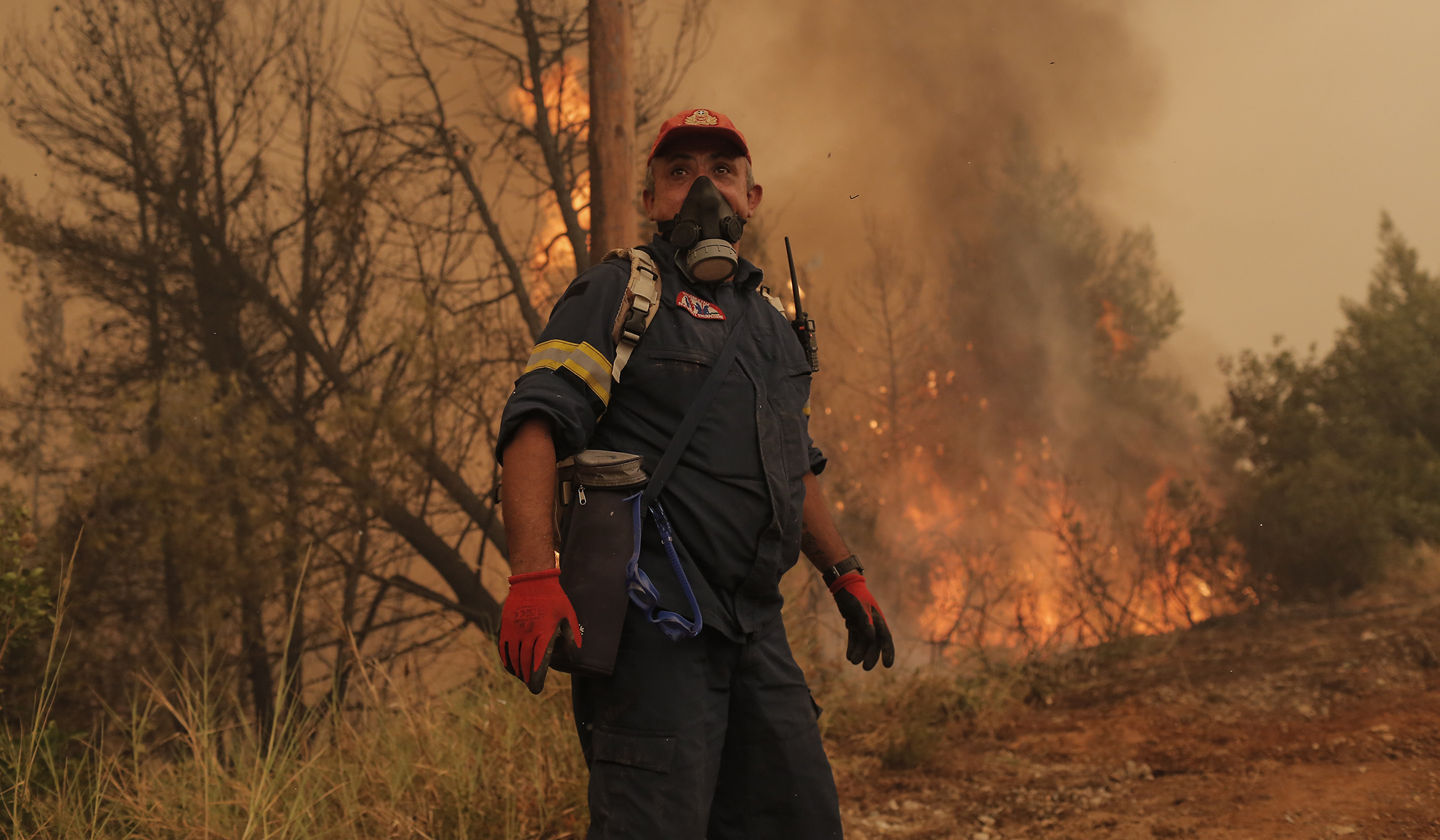
A firefighter pauses due to water shortage while battling flames during a wildfire at the village of Istiaia in the island of Evia, Greece, on 9 August 2021. (Photo: EPA-EFE / KOSTAS TSIRONIS)
Ever since, to some degree or another, the planet has been on fire. This means that for a vast number of plants, evolving ways of living with fire was essential, and today fire-adapted ecosystems cover 40% of the earth’s surface. There are plants in these landscapes, like the poetically named fire ephemerals, that use fire as a means of propagation.
Some particularly impressive fire ephemerals even wait for chemicals, like karrikins, in the smoke of burning leaves to trigger their germination. Such mastery of the regenerative aspects of fire displays the profound power accessible to life on Earth through the ancient dualism of destruction and rebirth. It captures something both allegorical and practical, an approach I believe we should engender into the solutions we develop to mediate our future lives alongside fire. It also points, by way of drawing attention to an imbalance, to what fire is teaching us: when viewed alongside nature’s supreme symmetry and wisdom, we see our current dominant systems as broken and malfunctioning in the heat, unable to restore itself and threatening to explode.
In the face of this grim vision, it’s time to acknowledge that fire has become our dark side. It is our burning desire to own the world. And we would be remiss to ignore the peril of our material lust.
We have had clear and unsettling proof in recent years that when fires become megafires — blazes of a mammoth size and force — they are unstoppable. Our planes and trucks are dwarfed by the roaring waves of orange, and neither bomb nor army can stop the razing march of a megafire. Like the current trajectory of our changing climates and alarming habitat and species loss, the slide towards a cumulative point of no return has begun, and fire whips at the gate of this tipping point.
To sweep away any uncertainty on this note, we need only turn the pages of the Sixth Intergovernmental Panel on Climate Change Assessment Report — the IPCC AR6 — that came out recently. The report made stark comment about our actions, saying it was “unequivocal that human influence has warmed the atmosphere, ocean and land” and that “human-induced climate change is already affecting many weather and climate extremes in every region across the globe.”
Thus the future holds fire as a daunting spectre. But we can look to the past for solace and meaning in the present. Many of our indigenous cultures of prehistory lived with fire in a very real and direct way because it was an important part of the ecosystems that they called home. From the savannahs of Africa to the eucalyptus forests of Australia, landscapes evolved with fire, using it for renewal and propagation, and our ancestors knew this. For them, fire was a teacher and a benefactor, and they were not, as we are, beguiled by the naïve belief that we are immune to its world-shaping power.
Staring at the shifting apparition that is a future with fire, I’m drawn to the thought of Albert Camus, the famous existentialist writer who believed that life had no meaning and our quest to find any was absurd. Like the idea that things can go along as normal for some time and then disaster strikes, seemingly out of the blue, and destroys everything. What does it mean? Why would this happen?
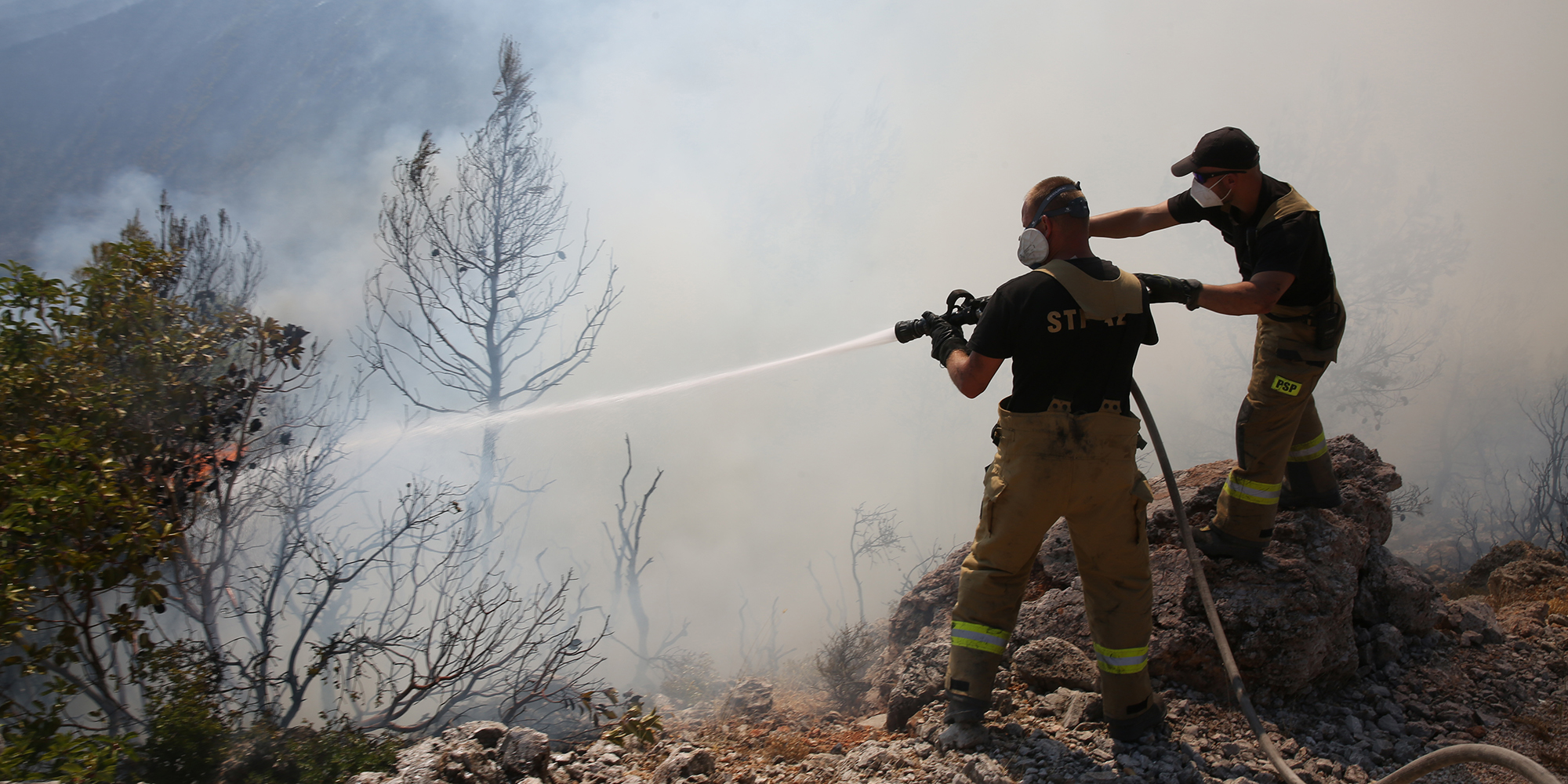
Firefighters extinguish a fire that broke out in Paleochori, Mandra, Attica, on the provincial road Oinois-Porto Germenou, Greece, 17 August 2021. (Photo: EPA-EFE / Alexandros Beltes)
I see the keening and devastated villager from the news, his face raised to the smoking heavens, asking God, “Why? Why did this happen?” These questions seem only normal for someone who has lost everything, but we do not have to wait until that happens to ask them.
Even if one believes Camus’s positing of the essential meaninglessness and absurdity of life (which I don’t) we can look to the pragmatic solutions he presents in order to bear out our thinking. Camus said a person can do one of three things in the face of the absurdity of life; one can ignore, deny or revolt. We have already tried to ignore, and many still deny, so we are left with only one choice; to revolt; against the slide towards a point of no return.
While I was sitting at my desk, thinking of a way to end this piece, several heavy claps of thunder rent the sky. They were loud enough to set the dogs barking and the lights flickering. About 15 minutes later my wife called down to me (my office is in the cellar) to say there was smoke coming from the bottom of the hill. I came up. Surely not.
From our balcony, we saw a thick plume of grey spiralling upwards and heard urgent shouts from the houses below us. I put on my heavy work pants and boots, grabbed a spade and drove toward the smoke, which was less than a kilometre away and rising fast. I saw cars parked and people running before I saw the flames.
Mixali, my farmer friend, arrived at the same time and we ran through the brambles towards the fire. Already there were firemen with long hoses out, and other men from the village with their tractors pulling tanks with pumps and hoses. I took my spade and ran along the fire’s edge, smacking at what smaller spots of flame I could get to. More people came and after an intense 30 minutes of fighting, all the main fronts were out.
One of the villagers told me the fire had been started by the lightning, which struck an electrical pole in the field where we stood. On the burnt earth, small piles of goat and donkey dung smoked, and I looked around at the dry and brittle landscape. It could have been much worse. We stayed around until a large firefighting plane came over, making a few passes before dropping a gush of water on the blackened patch.
As I walked back to my car, I passed a farmer giving his frightened miniature Shetland pony some water, and I was struck by the strange complexity of what just happened. A wildfire had started, lit by a lightning bolt, just down the road from our house. All of this while I was writing about living with fire and pondering the theoretical questions thereof.
The blaze had literal answers to my musings. I saw that wildfire can readily come from the sky, and that natural ignition is a reality in places like ours. I was shown that a well-prepared community and quick-acting firefighting units can be incredibly effective in stopping blazes before they run out of control.
Finally, I learnt that it’s best not to wonder too loudly about something you don’t want to happen. DM/OBP











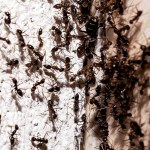









 Become an Insider
Become an Insider
Comments - Please login in order to comment.